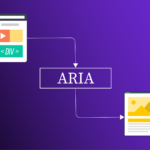Imagine a filing room overflowing with outdated documents, each a potential barrier to accessibility and user experience. This is the reality for many enterprises. This scenario highlights the challenges posed by legacy knowledge bases lacking modern accessibility features.
Documents, those created using outdated software or formats, can pose significant challenges for businesses. These documents often lack modern accessibility features, which can negatively impact user experience and compliance. Legacy documents cover a wide range of content, including:
Outdated Word Documents: These files may have been created using older versions of Microsoft Word or other word processing software. They often lack proper formatting, styles, and semantic structure.
Inaccessible PDFs: Many PDFs lack essential accessibility features, such as proper tagging, alternative text for images, and logical reading order. These shortcomings affect users with disabilities who rely on screen readers.
Scanned Documents with Poor Text Recognition: When paper documents are scanned and saved as image-only PDFs, the text recognition is often subpar. This renders the content inaccessible as screen readers cannot interpret it.
The consequences of having inaccessible documents within an organization can be far-reaching. Here’s why:
Legal Issues: Failure to provide accessible content may lead to legal challenges. Laws like the American Disability Act (ADA) emphasize the importance of making digital content accessible to all users. Non-compliance can result in lawsuits, fines, and reputational damage.
Reputational Damage: Inaccessible documents reflect poorly on an organization’s commitment to inclusivity. Customers, employees, and stakeholders take notice when content is not accessible. Reputation damage can impact trust and brand loyalty.
Enterprises can refer to the Web Content Accessibility Guidelines (WCAG) to ensure their content is accessible. WCAG 2.1 and its successor, WCAG 2.2, provide comprehensive guidelines for creating accessible digital content. These guidelines ensure that websites, applications, and documents are usable by people with disabilities. By adhering to these standards, both users and organizations benefit, fostering a more accessible digital landscape.
Legacy documents that are not remediated or made accessible-friendly often result in frustrating user experiences. Some of the difficulties users face in these situations include:
- Frustration and Cognitive Load: Picture an employee with a visual impairment trying to access a PDF. Without proper tags and structure, their screen reader struggles to interpret the content. This frustration adds unnecessary cognitive load, affecting productivity.
- Navigational Difficulties: Inaccessible documents lack clear navigation cues. Users may find it challenging to locate relevant sections, headings, or tables. Complex layouts hinder quick scanning, making it harder to find critical details.
- Disengagement from Content: Users often disengage from lengthy, poorly formatted content. Imagine an outdated policy document with dense paragraphs and no headings. Disengagement affects compliance, training, and informed decision-making.
- Emotional Impact: Exclusion takes an emotional toll. Users with disabilities feel marginalized when they encounter barriers. This impacts morale and overall satisfaction.
Enterprise level legacy documents pile up over the years and eventually end up being a burden to make them accessible friendly. The task of creating documents from scratch due to inaccessible legacy versions leads to a lot of wasted resources. Converting legacy documents to accessible formats requires manual effort.
Practical Solutions for Legacy Document Remediation
1. Assessment and Scoping
- Assess the Scope and Volume: Understand the extent of legacy content. Prioritize documents based on impact, legal requirements, and user needs.
- Choose the Right Tools and Technologies
2. Semantic Structuring and Tagging
Properly structured documents enhance accessibility. Add semantic tags to headings, paragraphs, lists, and tables. Consistent styles create a logical hierarchy.
3. Alternative Text for Images
Ensure images within documents have descriptive alternative text (alt text).
4. Testing and User Feedback
- Regularly test remediated documents with screen readers and assistive technologies.
- Involve users with disabilities to identify any remaining accessibility issues.
5. Training and Awareness
- Educate employees about accessible content creation.
- Encourage authors to follow accessibility guidelines from the outset.
6. Strategic Accessibility Expert Team
- Partner with an accessibility solutions provider who can provide the right guidance and build workflows to help navigate the complexities involved in digital accessibility.
documenta11y – Your Strategic Partner for Accessible Legacy Documents
The remediation of legacy documents presents a significant yet surmountable challenge for enterprises seeking to achieve a truly accessible culture. documenta11y offers a comprehensive and strategic partnership to guide your organization through this process.
Here are the reasons why documenta11y is the right accessibility partner for your document remediation needs.
Legacy Expertise: Our team comprises over 100+ accessibility specialists with deep knowledge of WCAG, PDF/UA, State-Specific Standards and proven experience across diverse document formats. We navigate the complexities of legacy content with a focus on optimal accessibility outcomes. Moreover, we are well versed in various accessibility regulations, laws and compliances from across the world.
Tailored Workflows: We engage in collaborative workshops with your team to gain a thorough understanding of your unique needs.
Technology-Augmented Solutions: documenta11y deploys a strategic combination of advanced tools and expert human intervention to achieve high-quality remediation. This approach ensures both accuracy and scalability, empowering us to tackle large-scale projects with confidence.
User-Centric Approach: User experience sits at the heart of our remediation process. documenta11y goes beyond achieving technical compliance to create inclusive and frustration-free experiences for all users. This is a completely self-serve, easy to use portal which uses a pay as you go model for your remediation needs. By partnering with documenta11y, you gain a trusted advisor with the expertise and resources to transform your legacy documents into accessible and user-friendly assets.

 5 Key Things to Look for When Choosing a PDF Accessibility Partner
5 Key Things to Look for When Choosing a PDF Accessibility Partner How Semantic Structure and Regions Improve Digital Accessibility
How Semantic Structure and Regions Improve Digital Accessibility Less ARIA, More Accessibility: Documenta11y's Guide to Cleaner Web Content
Less ARIA, More Accessibility: Documenta11y's Guide to Cleaner Web Content

